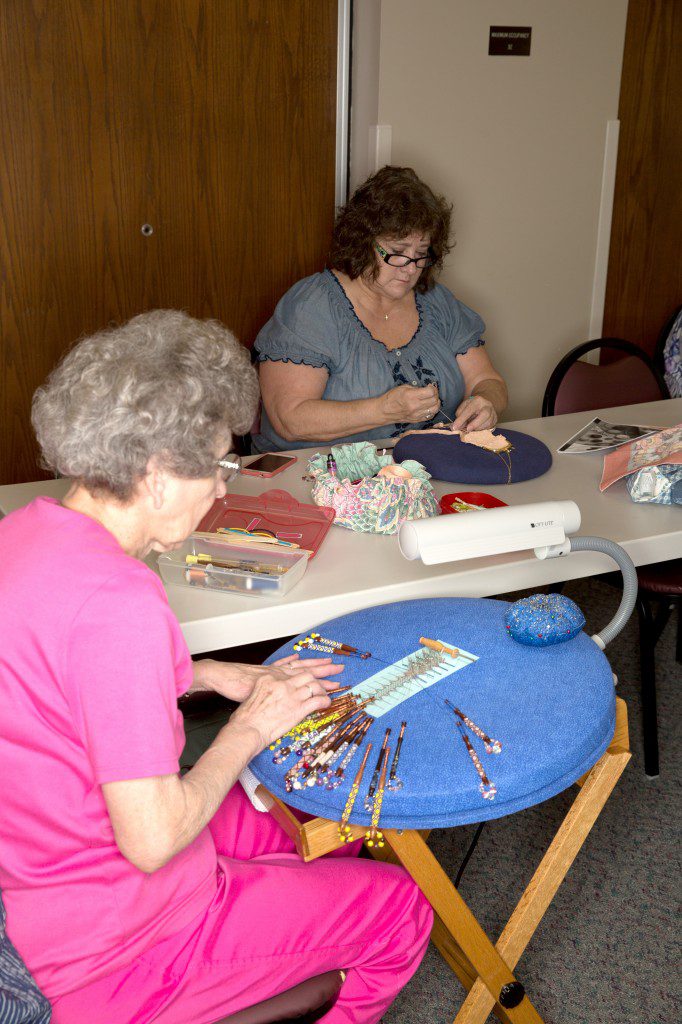
The word “lace” conjures up the image of doilies and wedding gowns to most people, but for the members of the Lacemakers Guild of Oklahoma, a rich history dances in their minds as they thread each delicate loop.[pullquote]“Within the process is solace – a time of peace, reflection and the satisfaction of the completed web,”[/pullquote]
“Lacemaking is part of the history of humanity,” says group librarian Sue Welch. “It connects us to our ancestors.” LGO founder Deborah Beever has studied this history since 1983 and can recount centuries-old stories of crime and conflict surrounding the esteemed craft that has become a peaceful pastime.
“Lace became a huge industry, and competition between countries was fierce,” Beever explains. “Under one restrictive trade law, a lacemaker was forbidden to travel and make lace outside the boundaries of his or her country upon penalty of death. Due to these laws, smuggling became rampant and quite creative. Lace was inserted into loaves of bread, hidden in coffins and sewn into linings of clothing.”
The lacemaking tradition lives on by the hands of the guild’s members. They gather monthly to share their work and learn from each other, finding comfort in this ancient skill.
“Within the process is solace – a time of peace, reflection and the satisfaction of the completed web,” says Bart Elwell, LGO vice president and treasurer. “For many, lacemaking is a vacation from the chaotic beeps, buzzings and digital overload of today’s world, and yet it still stimulates the mind – honing skills of problem solving and cultivating creative inspiration.”
It is a diverse and ever-evolving practice with a time commitment that can range from a few hours to several months, depending on the size and intricacy of the piece. Many lacemakers are drawn to a method called tatting that uses a simple device called a shuttle to guide the thread into a variety of designs.
“The ring and chain pattern of tatting is very distinctive,” says LGO president Paula Barnes. “I also like that it cannot be replicated by machine.”
The guild will share its art with the public on Oct. 4 during the 20th Annual Lace Embrace event at the Tri County Technology Center in Bartlesville. There will be demonstrations, classes and contests to help spread interest and enthusiasm about the craft.
“It will always take a new generation to sustain the art of lacemaking,” says Elwell. “I am always surprised and encouraged to see the number of young lacemakers who attend regional lace days and international conventions. They are energetic, bring fresh ideas and have the confidence to jump right into an art form that has much to offer.”






















